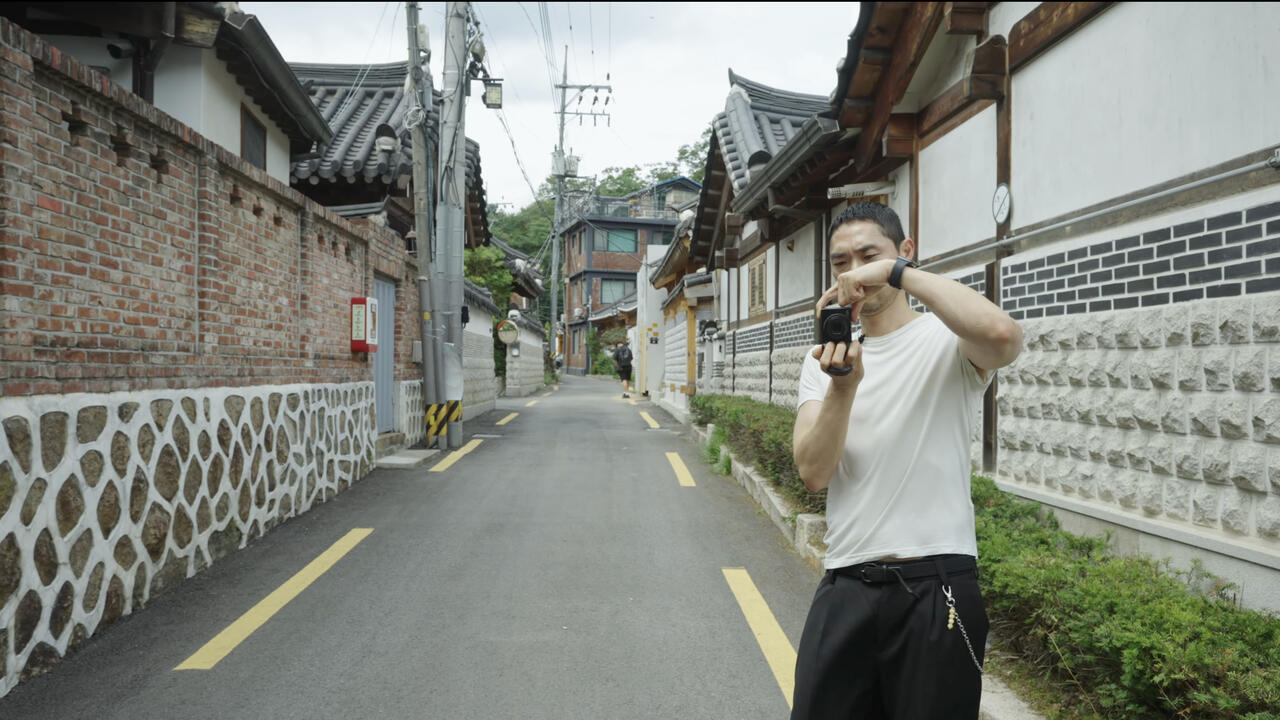Steve Dowson
A wardrobe door with a nude painted on one-side and a skeleton on the other is not an enormous flash of insight. Hey, the exterior hides an interior. But small revelations are not what Steve Dawson's 'Other' is concerned with. The words on the water bottle label at the nude's feet are in reverse, which implies that this is a self-portrait, painted using a mirror. Some grapes and a broken wine glass lay impotently at his feet while the nude's shadow shows a great big erection, which is certainly not evident in the flesh. This confusion of the real makes what could have been a dumb truism rather more loaded, more about the relationship between painting and artist.
Dowson's dark and neurotically painted studies place the role of the artist as absolute progenitor of the art. Dowson neither seeks nor finds, but constructs in the style of memento-mori of the mundane. The tacky, domestic objects of his choice - wicker baskets, common or garden vegetables and glassware - are ridiculous in dead-pan paint. Yet there is an element of alchemy, of bringing the dead to life in Dowson's constructions. They are not limited to flat, heterogeneous grounds; often a theme within a painting spills over into the form. A table, a chopping board or a gas fire serve as canvas or frame and echo or enlarge upon the content of the painting. 'Living Flame' is a cringing shrine to Princess Diana. A still life painting of Diana memorabilia is propped behind the protective grill of a homely, burnished 1970s gas fire. The familiarity of the object breeds contentment, evoking childhood memories for those of Dowson's generation. The plastic flowers and Union Jack add to the utter kitchness of the piece, its wicked irony enforced by the skull key ring grinning amongst the still life objects.
Dowson plays a lot on polarities - the in-out, dead-alive, still-fragmentary nature of things. The Diana and death theme of Living Flame is an irritating, adolescent sort of non-point to make. However, his play on contradictions within still-life leads to more interesting incidents. 'Bacchus' is a confusion of layers of reality and representation. A terse still life of wicker basket, grapes, broken glass and a classic red undulating cloth inhabit a pokey pictorial space along with a scarf printed with a wickerware design and a round tray printed with a Lisa Milroy like arrangement of raffia covered wine bottles. One level of representation unravels out to the next until finally the canvas itself is pinned onto the wall by its raw top edge. After those telescoping levels of wicker we end with a gesture charged with pathos - a slovenly moment of amateurism.
Ranging from adolescent scratching to aged daubing, this amateurism pervades. 'Veronica', a basket of flowers painted on a small, folded wooden table reeks of malted milk and blanketed laps. Yet 'God', a painting of a comedy vegetable man with long eyelashes and a top hat is so silly that it comes round full circle and seems anthropological. And then there's the most annoying pun right in the centre of the gallery: the supporting column has been painted candy pink and an over-sized Blackpool rock label stuck on to hammer the joke home.
Dowson's first solo show illustrates the intensity of his practise, his interrogation of painting, and also his main downfall - the inability to resist a bad pun. A spring balance hung on the wall is weighing a painting of a bag of apples. Yet there is a joy of finding out what painting can do to itself, how tradition can be perverted to relevant ends, factoring in self-mockery and self-reflexiveness. This bridging of the form and the content requires real lightness of touch, which Dowson achieves when he curbs his gags. 'Lost World' is a painting of cartoon dinosaur merchandise, some painted straight, others in reflection. The pictorial structure is further confused by a bent tin lid and plastic key fobs with 3D images stuck mawkishly around the edge of the canvas.. And then the whole composition is replicated back to front in the mirror placed perpendicularly to it, drawn into another converse dimension. It is difficult to unravel what is going on pictorially, as the high kitsch objects are flattened by a sombre, muddy palette - another perverse polarity. Rendering low life in traditional paint, the distasteful mediocrity of clutter attains a significance, no matter how droll.

















